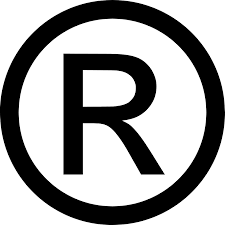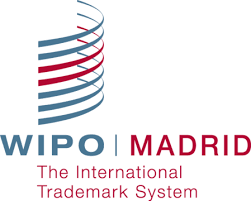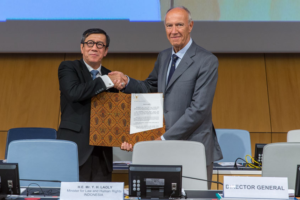Why does the USPTO not “auto-acknowledge” Section 15 trademark declarations? Why does it take the USPTO an average of 37 days to do something that should take around ten seconds to do? Continue reading “Why does the USPTO not “auto-acknowledge” Section 15 trademark declarations?”
Time returns to normal for WIPO filings
As I reported a week ago, the usual autumn thing happened with time zones. A week ago Europe “fell back” with daylight saving time.
Now today the US also “fell back”.
For the past week, US filers had an extra hour available to get a same-day filing date for filings at WIPO. A US filer could file as late as 5PM (Mountain Time) instead of the usual 4PM, and get a same-day filing date.
Now it is back to normal. The time of day to keep in mind is once again 4PM Mountain Time.
Ethics CLE webinar for intellectual property
I’ll be offering a webinar about intellectual property ethics. It is accredited for ethics credit CLE in California and Colorado. You can read about it here. Attendees will receive a Certificate of Attendance which might get you CLE credit in other states if you are lucky.
Those who are subscribed to this blog may use coupon code “blog17” between now and November 6 to get a $20 discount on this program.
For the next week, an extra hour available for WIPO filings
 Filers in the Patent Cooperation Treaty, Madrid Protocol, and Hague Agreement systems (utility patents, trademarks, and industrial designs) know that it is important to keep always in mind when midnight will arrive in Geneva, where WIPO is located.
Filers in the Patent Cooperation Treaty, Madrid Protocol, and Hague Agreement systems (utility patents, trademarks, and industrial designs) know that it is important to keep always in mind when midnight will arrive in Geneva, where WIPO is located.
For a PCT filer, this matters because to get a same-day filing date, a PCT application being filed in RO/IB will (usually) need to be filed by 4 PM Mountain Time. The same is true for filing an Article 19 amendment. The same is true if you are using ePCT to file a Demand and Article 34 amendment.
For a Madrid filer, this matters among other things for the payment of decade renewal fees.
For a Hague filer, this matters for the the filing of an international design application at the IB.
The point of today’s post is that starting yesterday, and for the next week, you get an extra hour to get a same-day filing date. The reason is that Europe and the US carry out their daylight saving time transitions on different days that are a week apart.
This means that you could file as late as 5 PM Mountain Time (instead of the usual 4 PM) and still get a same-day filing date.
Things will return to normal a week from now, on November 5, 2016.
Serial number? Application number?
Can the terms “serial number” and “application number” be used interchangeably? The answer is “no” as I will discuss. Continue reading “Serial number? Application number?”
How long it takes USPTO to issue a Certificate of Registration?

How long does it take the Trademark Office at the USPTO to issue a Certificate of Registration? That is to say, once an opposition period has concluded with nobody having filed opposition, how much time goes by before the USPTO actually grants the registration? Is it sometimes slower? Sometimes faster? The amount of delay turns out to be extremely predictable.
Continue reading “How long it takes USPTO to issue a Certificate of Registration?”
Why you can’t always count on a subsequent designation being available?
 A member of the Madrid Protocol listserv asked:
A member of the Madrid Protocol listserv asked:
I would like to file an e-subsequent designation for India. The country of origin is the EU and the owner is in an EU-member country. A [Madrid Protocol] application was filed in 2011 designating countries other than India. On the e-Subsequent Designation application page, a number of countries are listed from which to choose to designate protection. India is NOT listed as one of those countries. Am I missing something? Does anyone know why India does not appear in the list of countries to designate subsequent protection to?
I was fascinated to learn why it is that India is a member of the Madrid Protocol and yet an owner of an International Trademark Registration might not be able to carry out a subsequent designation to India. The explanation also offers a reminder how important it is to use an e-validated filing tool from WIPO rather than filing on paper. Continue reading “Why you can’t always count on a subsequent designation being available?”
Gaining incontestability economically
The majority of US trademark registrations lack “incontestable” status, because the owner of the registration has not filed “Section 15” papers at the USPTO. (I have blogged here about what “incontestable” status means and why a trademark owner might want to gain “incontestable” status.) In this article I will talk about ways to gain “incontestable” status economically.
Indonesia joins Madrid Protocol

On October 2, 2017, Indonesia deposited its instrument of accession to the Madrid Protocol at the International Bureau of the World Intellectual Property Organization. The Madrid Protocol will thus enter into force for Indonesia on January 2, 2018.
This brings to 100 the number of members of the Madrid system. Continue reading “Indonesia joins Madrid Protocol”
2016 Tote Boards published
Somehow it got put on the back burner, but finally I have sorted and published the results for the 2016 US Utility Patent Tote Board and the 2016 US Trademark Tote Board. You can see all of the Tote Boards here.
